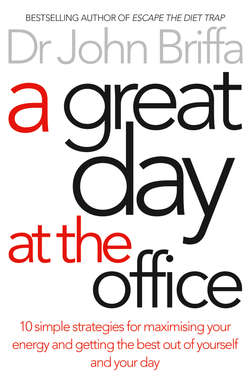Читать книгу A Great Day at the Office: 10 Simple Strategies for Maximizing Your Energy and Getting the Best Out of Yourself and Your Day - Dr. Briffa John - Страница 17
PART 1: FROM FOOD INTO ENERGY
ОглавлениеAlmost all our energy needs are met through the activity of tiny capsule-shaped structures in our body’s cells known as ‘mitochondria’. Essentially, mitochondria take ‘fuel’ (from food) and convert it into energy. You can think of the mitochondria as tiny engines that drive the processes in the body – everything from our mental energy to the speed and strength of our muscles. Energy production in the mitochondria is dependent on two main factors:
1 How effectively the mitochondria are supplied with fuel
2 The appropriateness of the fuel supplied to the mitochondria
Much of this chapter is dedicated to optimizing these factors to get the best performance out of our body and brain.
There are essentially two fuels the mitochondria can use to create energy. One is sugar; the other is fat. Later on in the chapter we’ll be exploring the role of fat (in all its forms) in the diet, but for now, let’s focus on sugar.
There are different types of sugar in the diet, but the one that the mitochondria utilize to generate energy is known as ‘glucose’. Some foods contain actual glucose, including certain fruits and sugary soft drinks. Glucose can also be derived from ‘table sugar’ (‘sucrose’), which consists of a molecule of glucose joined to a molecule of another sugar known as ‘fructose’.
Another important (but sometimes under-recognized) source of glucose is starch (found in foods such as bread, potato, rice, pasta and breakfast cereals). Starch is, essentially, made up of a chain of glucose molecules.
